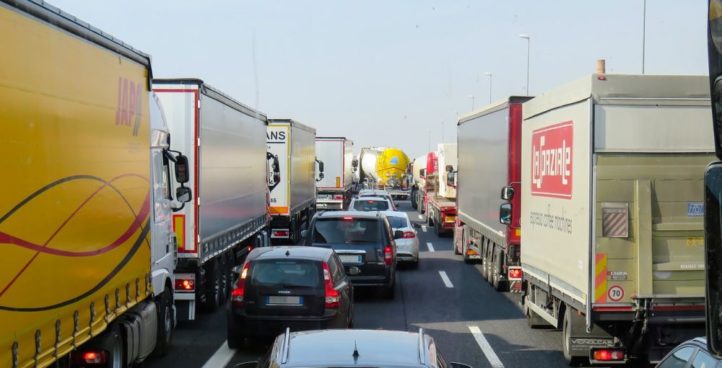
Many European countries are currently subject to the phenomenon of congestion in the ground transportation. It is manifested by even longer traffic jams on the road, delays accumulated more at airports and ports, not to mention the trains that are always inclined to arrive late.
Traffic jams on the rise for nearly a decade
There are several studies that show the state of congestion in ground transportation in Europe. In 2013, the INRIX (leading provider of traffic information and driver assistance) conducted a major study that shows that traffic congestion has clearly increased since 2010. According to the report, France is ranked in 4th position among the countries affected by this phenomenon, which it means that the French drivers spend on average 35 hours stuck in traffic. The Parisians are in 8th place of the worst off drivers in Europe, with about 55 hours in traffic jams for the single year 2013. A year later, in 2014, the INRIX published another report which states that the congestion in Europe has increased by 6% in a single year.
European airports are crumbling under the weight of an increased traffic
More and more people living near airports in Europe complain of noise pollution due to the increased air traffic that causes this congestion. According to experts, if this phenomenon is on the rise in Europe, it is simply because the major airports of the continent have stopped investing in their expansions. According to Olivier Jankovec, director of ACI Europe, air traffic is expected to grow considerably in the next two decades.
By 2035, take-off and landing of aircraft is expected to increase by 50%. At the same time, the capacity of runways to accommodate airplanes at airports should increase by only 17%. This has raised the fears of a worsening of congestion which has consequences for many losses for airports. In addition, at airports, the travelers are accustomed to flights that always arrive late. Even if you take a seat on an airplane, you will have to wait a long time for the airport to free itself from a part of the flights in waiting.
European ports affected by congestion
In 2017, the congestion has reached a very high level in European ports. Unsurprisingly, the largest container terminals in the old continent namely Antwerp in Belgium and Rotterdam in the Netherlands were the most affected, since they do not represent more than 40% of business in Europe.
As a result, the major carriers including Hapag-Lloyd, MOL and CMA CGM have begun to impose surcharges in these two ports. They justify this decision by delays accumulated in unloading and loading containers. These carriers face delays of 36 hours, or even 120 hours in extreme cases. Congestion also encouraged them to consider the application of these surcharges.
